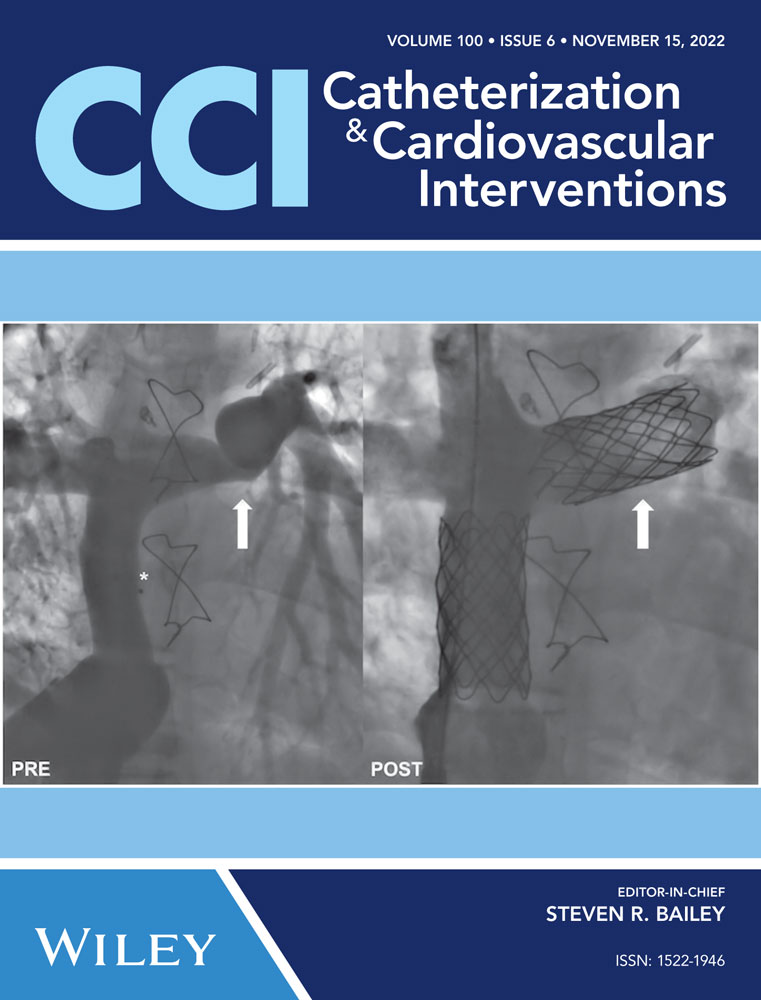Extraplaque versus intraplaque tracking in chronic total occlusion percutaneous coronary intervention
Michael Megaly and Kevin Buda contributed equally.
Abstract
Objective
To compare the clinical outcomes after extraplaque (EP) versus intraplaque (IP) tracking in chronic total occlusion (CTO) percutaneous coronary intervention (PCI).
Background
The impact of modern dissection and reentry (DR) techniques on the long-term outcomes of CTO PCI remains controversial.
Methods
We performed a systematic review and meta-analysis of studies that compared EP versus IP tracking in CTO PCI. Odds ratios (ORs) with 95% confidence intervals (CIs) are calculated using the Der-Simonian and Laird random-effects method.
Results
Our meta-analysis included seven observational studies with 2982 patients. Patients who underwent EP tracking had significantly more complex CTOs with higher J-CTO score, longer lesion length, and more severe calcification and had significantly longer stented segments. During a median follow-up of 12 months (range 9–12 months), EP tracking was associated with a higher risk of major adverse cardiovascular events (MACE) (OR 1.50, 95% CI (1.10–2.06), p = 0.01) and target vessel revascularization (TVR) (OR 1.69, 95% CI (1.15–2.48), p = 0.01) compared with IP tracking. There was no difference in the incidence of all-cause death (OR 1.37, 95% CI (0.67–2.78), p = 0.39), myocardial infarction (MI) (OR 1.48, 95% CI (0.82–2.69), p = 0.20), stent thrombosis (OR 2.09, 95% CI (0.69–6.33), p = 0.19), or cardiac death (OR 1.10, 95% CI (0.39–3.15), p = 0.85) between IP and EP tracking.
Conclusion
EP tracking is utilized in more complex CTOs and requires more stents. EP tracking is associated with a higher risk of MACE, driven by a higher risk of TVR at 1 year, but without an increased risk of death or MI compared with IP tracking. EP tracking is critically important for contemporary CTO PCI.
CONFLICTS OF INTEREST
Mir Basir: Consulting/Speaker Abbott Vascular, Abiomed, Cardiovascular Systems, Chiesi, Procyrion, Zoll. Khaldoon Alaswad: consulting/speaker honoraria from Boston Scientific, Cardiovascular Systems Inc, LivaNova, Teleflex. Emmanouil Brilakis: consulting/speaker honoraria from Abbott Vascular, American Heart Association (associate editor Circulation), Amgen, Asahi Intecc, Biotronik, Boston Scientific, Cardiovascular Innovations Foundation (Board of Directors), CSI, Elsevier, GE Healthcare, IMDS, Medicure, Medtronic, Siemens, and Teleflex; research support: Boston Scientific, GE Healthcare; owner, Hippocrates LLC; shareholder: MHI Ventures, Cleerly Health, Stallion Medical. Margaret McEntegart: Consulting/speaker honoraria Abbott Vascular, Biosensors, Boston Scientific, Medtronic, Shockwave Medical, Teleflex. Stephane Rinfret: Consultant, Boston Scientific, Abiomed, Abbott Vascular and Soundbite Medical. The authors declare no conflicts of interest.
Open Research
DATA AVAILABILITY STATEMENT
The data that support the findings of this study are available on request from the corresponding author. The data are not publicly available due to privacy or ethical restrictions.




